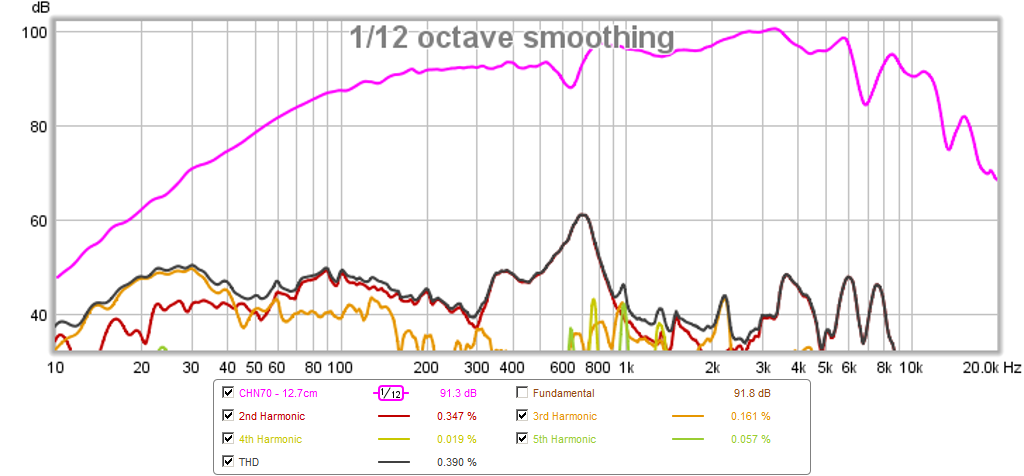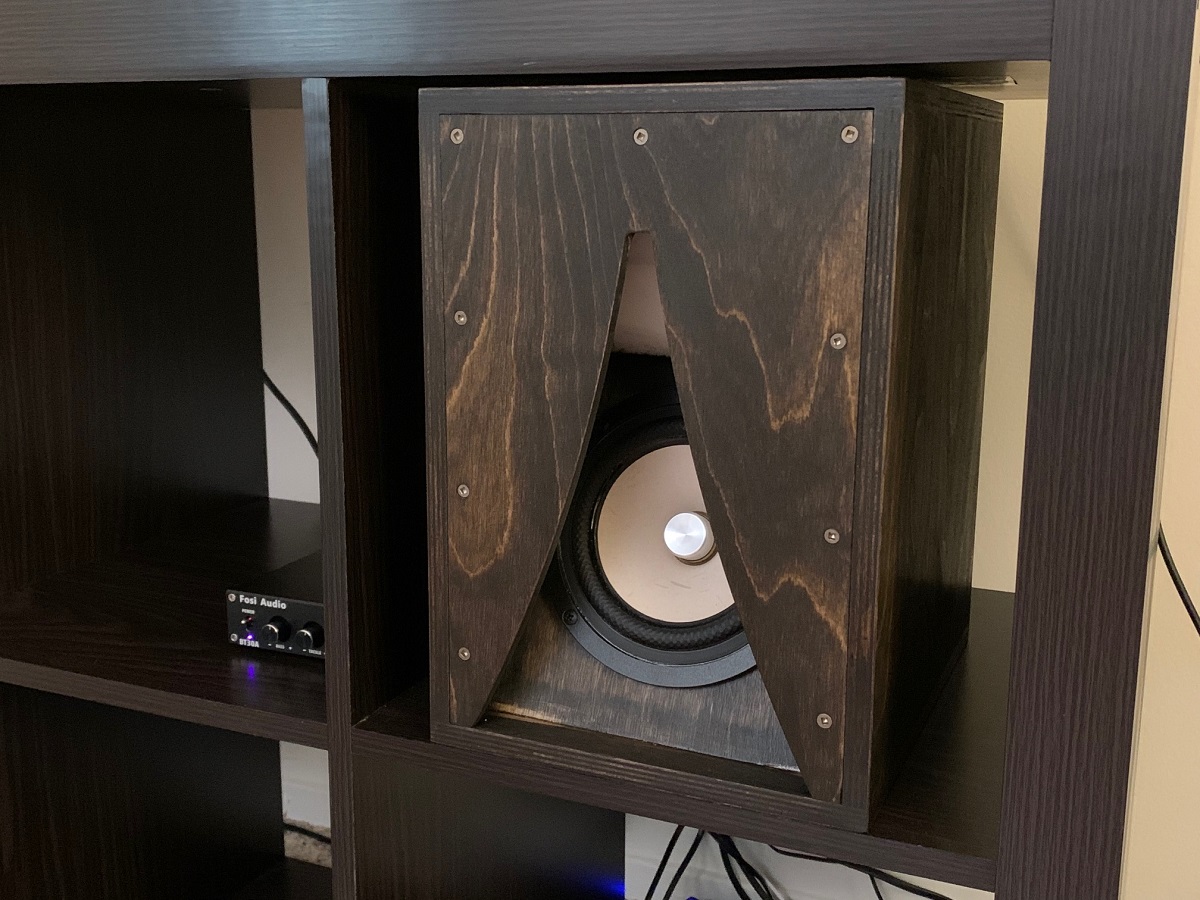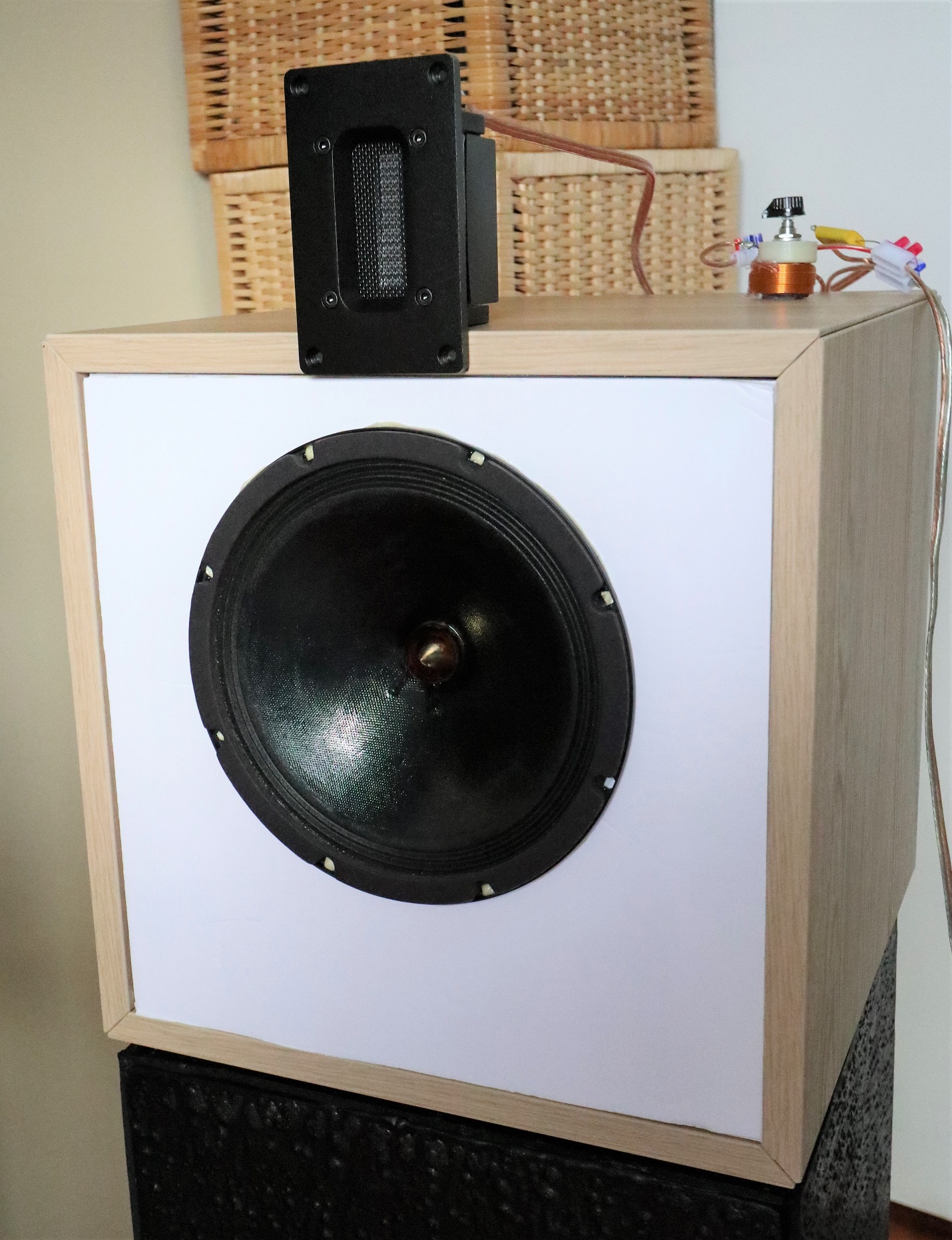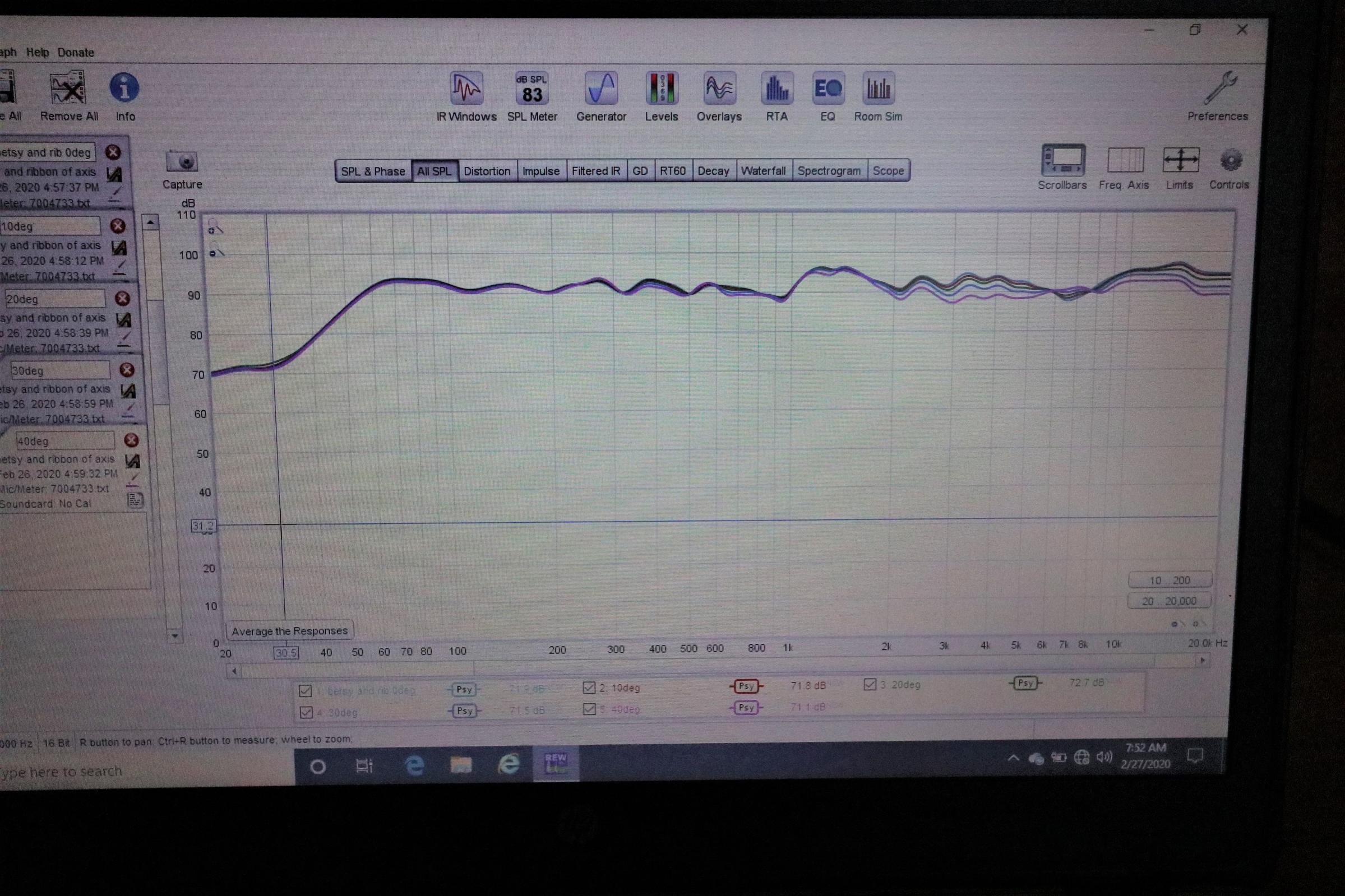Whatever gave you that idea. Granted there will be some members who will argue on their own hifi religion till the end of time. But in those cases, I just keep quiet and don't bother to answer it ... better use for my energy.Not especially controversial -that's about the best way of using most of them.
Oon
FAST - Fullrange Assisted Subwoofer Technology
WAW - Woofer Assisted Wideband
Had to look it up so I thought I'd post the explanation to help with the Google.
WAW - Woofer Assisted Wideband
Had to look it up so I thought I'd post the explanation to help with the Google.
Nonsense.Good point on energy storage, Scottmoose. A big heavy cone mid bass won’t be as good as a lighter one.
AllenB,
One word zingers aren’t particularly constructive. Would you care to elaborate? From a physics standpoint, Newton’s 2nd law would seem to indicate that a lighter cone would be able to respond to dynamics faster. Lighter mass, faster acceleration. One reason why ribbon tweeters seem to be able to effortlessly go to higher frequencies.
One word zingers aren’t particularly constructive. Would you care to elaborate? From a physics standpoint, Newton’s 2nd law would seem to indicate that a lighter cone would be able to respond to dynamics faster. Lighter mass, faster acceleration. One reason why ribbon tweeters seem to be able to effortlessly go to higher frequencies.
It may not be a “problem” if you want it to store energy. Momentum is mass x velocity or mass in motion. The kinetic energy of that mass in motion is 1/2 x mass x velocity squared. The stored energy is directly proportional to the mass. For the same velocity, a lower mass cone will have less momentum, and hence less associated kinetic energy.
To AllenB:
Do you know something that others here don't?
Spill it out.
This is not the way to have a conversation.
Do you know something that others here don't?
Spill it out.
This is not the way to have a conversation.
I can't speak for Allen, but I suspect he's referring to the fact that the nominal acceleration factor Γ in meters per second per second (taken as B*L / Mms in SI units) is really only another way of expressing efficiency. It can be useful taken purely as that, and all other things being equal, high efficiency is a very good / preferable thing, but transient response per se is inherently linked to bandwidth so under pistonic conditions it's ultimately set by VC inductance.
The slight caveat there is the 'pistonic conditions' bit, which is what I was trying to point toward above. Apologies for my lack of clarity. When I said 'energy storage' I was talking about stored energy in the cone and / or overall moving structure. It's usually seen as a dip (as opposed to a peak) in the frequency response, and like peaks is also usually visible as a deviation in the impedance curve. That's often a good way of rapidly identifying it, even if it's not immediately obvious in the FR. When [if=""] you look at HD plots, you'll see an attendant spike there also. Unless relatively small and the motor is state-of-the-art, you can find a reduction in 'clarity' (call it what you will) as a result. When you're running the midbass / wideband mid over a very wide range, this is something worth keeping a beady eye out for, especially since with highly damped drive units it's not always easy to spot unless you've got high resolution data. CSD plots can help, as can HD out through HD5, providing you also keep the stopband effects & those of any low pass filter present in mind.[/if]
The slight caveat there is the 'pistonic conditions' bit, which is what I was trying to point toward above. Apologies for my lack of clarity. When I said 'energy storage' I was talking about stored energy in the cone and / or overall moving structure. It's usually seen as a dip (as opposed to a peak) in the frequency response, and like peaks is also usually visible as a deviation in the impedance curve. That's often a good way of rapidly identifying it, even if it's not immediately obvious in the FR. When [if=""] you look at HD plots, you'll see an attendant spike there also. Unless relatively small and the motor is state-of-the-art, you can find a reduction in 'clarity' (call it what you will) as a result. When you're running the midbass / wideband mid over a very wide range, this is something worth keeping a beady eye out for, especially since with highly damped drive units it's not always easy to spot unless you've got high resolution data. CSD plots can help, as can HD out through HD5, providing you also keep the stopband effects & those of any low pass filter present in mind.[/if]
Last edited:
Thank you for the explanation Scott. I have seen the dips in the FR, the wiggle in the impedance and the small blip in the HD plot at the same point. On most smaller full range drivers this seems to happen where the breakup happens. I have also seen it much lower on some drivers under 1kHz even. Perhaps the most vivid memory I have of this was the CHN-70 where there was a dip at 700Hz and a high HD peak at the same point and another one below 3.5kHz and 7kHz:

But that driver in a mini Karlsonator blended very well with the selective attenuation of the K aperture and was quite good to listen to.

But that driver in a mini Karlsonator blended very well with the selective attenuation of the K aperture and was quite good to listen to.
Right. It's lurking in more drivers than is often realized. There are plenty that have it and are still excellent units (and others that aren't 😉 ) -it's just another thing to keep an eye out for, especially when using a driver over an extended BW.
Hi Scottjoplin,
I have always wanted to but the cost has been a bit of an activation barrier. When I first got into DIYA back in 2012, I remember really (dreaming really) wanting to get the JX92 and using it in the VTL. Nowadays, I can afford them, but the price of an Eikona is about the same as the PTT6.5 which I did get and am using in a nice 2way TL at the moment. But yes, would love to try the Eikona, one of these days.
The Eikona 2 seems very smooth and no big HD peaks:

$783/pair - time to start saving? 🙂
The thing is, I have also found that the W5-2143 sounds quite lovely and has reach into the bass and the treble for $60:
https://www.parts-express.com/pedocs/specs/264-958--tang-band-w5-2143-spec-sheet.pdf

I have always wanted to but the cost has been a bit of an activation barrier. When I first got into DIYA back in 2012, I remember really (dreaming really) wanting to get the JX92 and using it in the VTL. Nowadays, I can afford them, but the price of an Eikona is about the same as the PTT6.5 which I did get and am using in a nice 2way TL at the moment. But yes, would love to try the Eikona, one of these days.
The Eikona 2 seems very smooth and no big HD peaks:

$783/pair - time to start saving? 🙂
The thing is, I have also found that the W5-2143 sounds quite lovely and has reach into the bass and the treble for $60:
https://www.parts-express.com/pedocs/specs/264-958--tang-band-w5-2143-spec-sheet.pdf
Last edited:
Perhaps someone local could lend you one. 🙂 I've wondered whether it suffers from breakup modes in a similar way to other full range drivers. It has what Jordan call a "contaflex" cone, same as earlier drivers, I remember reading some time ago an article about it but it's very difficult to find and I haven't had any luck lately.
I assume this is what you're referring to?
It's basically controlled flex which places it akin in that sense to a soft-cone type design (usually associated with softer paper pulps, polymers etc.) rather than most hard cone units (hard paper pulps, carbon, kevlar, most alloys etc.). As far as I know, the Eikona cone is still very close to the original Ted designed about 30 years ago -it's the rest of the driver that's seen the greater changes compared to earlier units. No bad thing, obviously.
It's basically controlled flex which places it akin in that sense to a soft-cone type design (usually associated with softer paper pulps, polymers etc.) rather than most hard cone units (hard paper pulps, carbon, kevlar, most alloys etc.). As far as I know, the Eikona cone is still very close to the original Ted designed about 30 years ago -it's the rest of the driver that's seen the greater changes compared to earlier units. No bad thing, obviously.
Attachments
Last edited:
That would be great if someone in the States could lend me a pair to play with. 🙂
I promise to take good care of them.
I promise to take good care of them.
Yes, thank you Scott. X, you might find this interesting EJ Jordan Eikona Fullrange Driver - DIY • Canuck Audio Mart Hifi and Audio Forum
I just ran across Adason’s super Betsy WOW with a ribbon. The Betsy is 8in fullrange running fullrange with BSC and crossed to a ribbon around 8kHz. Looks like a superb result.
betsy wow and ribbon
Definitely a STAFT.


betsy wow and ribbon
Definitely a STAFT.
Interesting crossover. What does the vertical look like with both drivers playing (polars)?
Here are the polars for the Rockville (Foamcore homage to the LS3/5A). Horizontally looks great - almost no beaming if you are in +/-30deg zone. For vertical, make sure you are -5deg to +15deg of the tweeter axis or the response has deep nulls. Many non point source speakers have this issue with regards to vertical polars. More info here:
https://www.diyaudio.com/forums/mul...0a-foamcore-homage-ls3-5a-13.html#post6371457
Horizontal polars at 0.5m and 2.0Vrms:
Vertical polars at 0.5m and 2.0Vrms, -ve means below tweeter axis and +ve means above tweeter axis:
- Home
- Loudspeakers
- Full Range
- FAST or STAFT (WAW or STAW) Which is Better?